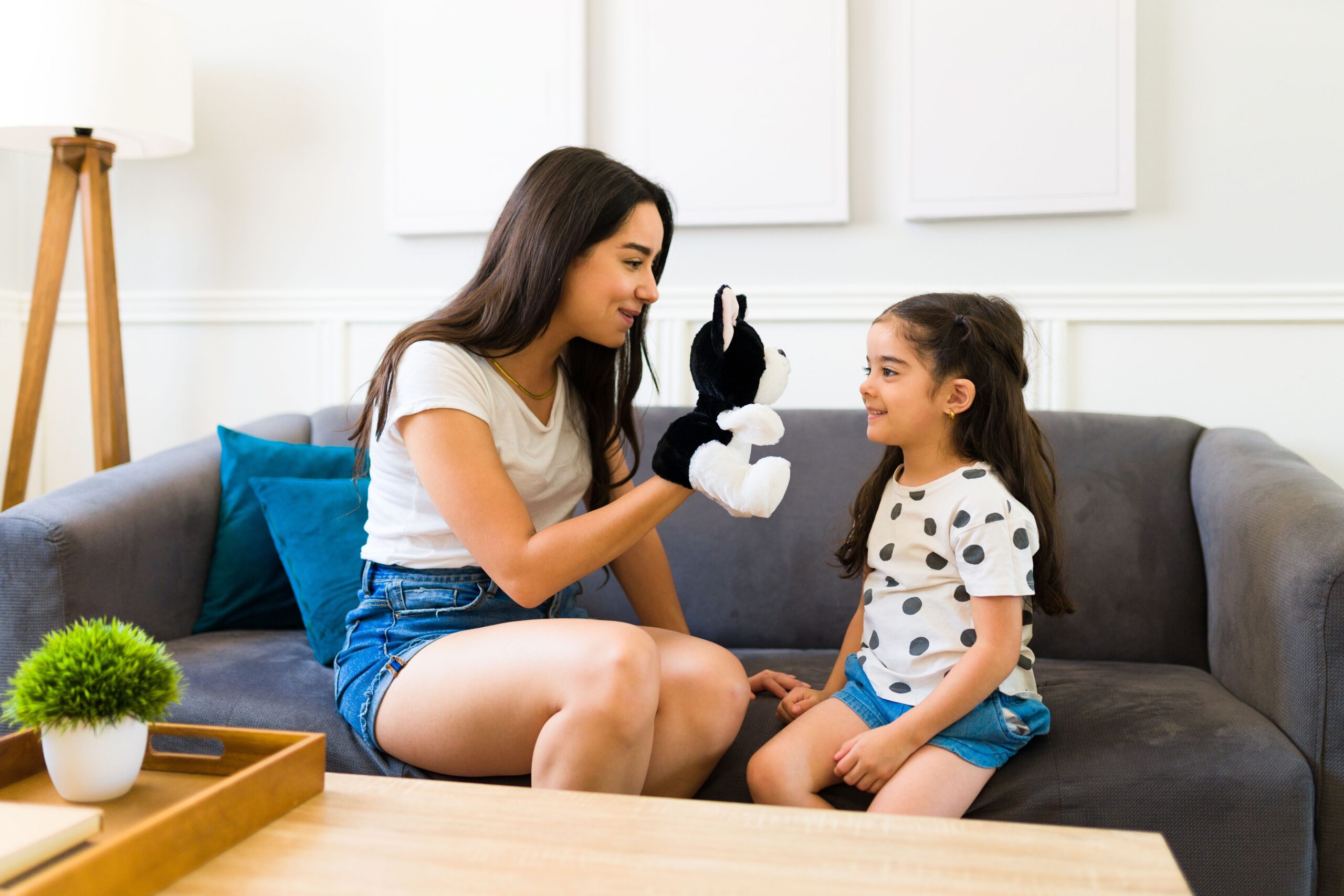How to Incorporate SEL at Home
Using the SEL (Social-Emotional Learning) curriculum at home is good for children. When you include SEL activities in your everyday schedule, you create a caring space that helps your child not only do well in their early childhood setting, but also learn important life skills for their overall happiness and health.
Here are some easy ways you can include social-emotional learning at home!

Sing to Your Baby
Sing songs or nursery rhymes to your baby when changing their diaper, often repeating the same, the routine reassures babies.
Imaginative Play
In any model of imaginative play, follow your child’s lead, listen actively, and respond to their ideas and instructions. This shows attentive listening and reinforces their creativity.
-
- Puppets are a helpful tool for teaching children about their emotions, introducing simple feeling words like happy, sad, and angry. Children often feel comfortable expressing their feelings with puppets, making discussing big, challenging topics easier.
Tell Stories
Tell jokes, share stories and get to know each other through laughter, conversation and creativity.
-
- Look at photos together of friends and family and talk about who they are.
Media Surrounding Empathy
Media types like books, music, TV shows, movies, and games can teach children valuable lessons about emotions and social cues. When emotional events happen or a character experiences a big feeling, you can pause and ask your child how they think the character feels. Shows like “The Smack-Dab in the Middle of the Day Show” or the “Emotion Motion” podcast can be great tools for teaching these skills.
-
- Ask your child questions while reading or watching movies together like, “What do you think he should do? What would you do if you were this character?” Or, “How do you think they felt when that happened? How would you feel?”
Model Appropriate Behavior
Observation is important in how young children learn new skills and knowledge. If you show your child how to share, express gratitude, help others, and communicate emotions, they will learn to interact with people outside their home. You can also share your problem-solving process with your child to help them improve their skills in this area and learn to manage frustration. For instance, if you accidentally spill orange juice, you can say, “Oops! Let me grab a towel to clean this up!” This will teach your child how to control their emotions and avoid outbursts when things are unplanned.
-
- Working together with your child when they make mistakes is a wonderful way to show how you handle emotions in such situations. It creates a secure and safe space for them to do the same, showing them that making mistakes is normal, and they can always count on you for support. This can be as simple as saying, “Oops! I made a mistake! I better try again,” when something doesn’t turn out perfectly in your own everyday tasks. Your child will get used to the idea that mistakes are OK!
Work Together on Completing Tasks
You can teach your child responsibility and organization skills by involving them in household chores like laundry, dish cleaning, or floor sweeping.
-
- Create an organized to-do list, daily schedule, or a “vision board” to help your child learn time management and responsible decision-making. This will allow them to practice setting goals, making decisions, and achieving those goals.
Help Manage Stress
Managing emotions can be tough, especially for children who may not have experienced them before. Mindfulness activities, exercise, and or music can help teach them to manage their emotions.
-
- Encourage your child to draw or paint if they have trouble expressing emotions verbally. This can help them think about their thoughts and feelings, while also helping you understand how they process emotions.
-
- Example: Do they use certain colors to show specific emotions? Do they show their frustration as scribbles?
- Teach your child stress management skills by preparing for situations and roleplaying with them of what’s next.
-
- Example: They can put away toys they don’t want to share before a friend comes over, or you can walk them through a step-by-step plan of what to expect before you go somewhere, like the park, and meet a new friend for the first time.
-
-
- Encourage your child to draw or paint if they have trouble expressing emotions verbally. This can help them think about their thoughts and feelings, while also helping you understand how they process emotions.
Social-emotional learning (SEL) is an important aspect of a child’s development that helps them learn and manage their emotions, develop empathy, and develop healthy relationships. Introducing SEL activities into your everyday routine at home can greatly impact their overall well-being, both in the short and long term.
As a parent, you can help your child navigate life’s challenges by encouraging emotional awareness and resilience through various SEL activities. Try this simple set of activities for social emotional development, and these four activities about learning social-emotional skills, and let’s integrate SEL into our daily schedules to help our children grow emotionally and socially!
Worried about your child’s development? Free developmental screenings are available at child development centers throughout Wyoming. Contact a center near you today!

Wyoming Department of Health
(307) 777-6972
(307) 777-7515
Screen for Success is for every child and every family in Wyoming, without exception, and without discrimination.

